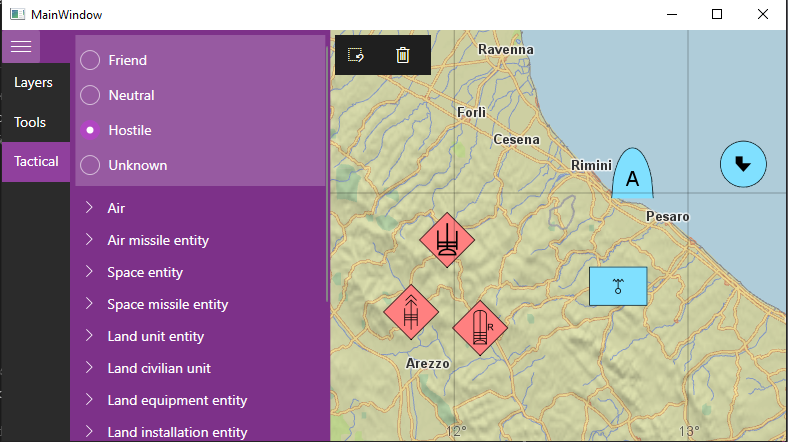
Step 1/2: Server-side development
If you’ve followed the previous articles in the series you have a good foundation for a client application with draw tools and tactical symbols. We will now expand this to support a scenario where several clients can collaborate by sending feature updates in real-time over a WebSocket connection using the popular library SignalR.
This is a two-part article where we begin by writing the streaming server and finish in the second part by connecting the WPF client to the server.
This archive contains the solution outlined in this and the next article.
Requirements
- Completed previous tutorials.
Overview
To have multiple clients share information we need to add a new component that will be responsible for receiving and sending information between them. To achieve this we will create a small server application that will mediate between the clients. Each client that will participate in the information sharing will have to connect to the server and synchronize to receive the latest information and then subscribe to the relevant streams to start receiving information from the other clients. The scenario could be visualized with the image below:

On the client side, we will implement a background service that will continuously be listening to the different streams – insert, update and delete, and also send local updates to the server. Any processing such as serialization or deserialization will happen in the service without blocking the UI.
The server, on the other hand, will act as the source of truth, managing the shared state of the connected clients. It will consist of a thread-safe lookup mechanism with observables that will signal the insert, update and delete events that will be exposed to the clients.
Creating the streaming server
Start by adding a new project to the existing solution by right-clicking the solution in Visual Studio and clicking Add > New Project… Then find the template called ASP.NET Core Empty, select that and click Next. Name it StreamingService and click Next again. In the next dialog, un-check the Enable Docker option for now and then click Create. This will set us up with a very bare-bones web application that we can extend.
Next, add the following NuGet packages to the project:
- System.Reactive
- Carmenta.Engine
- Microsoft.AspNetCore.SignalR.Protocols.MessagePack
Creating the streaming repository
We will create a simple class for storing our features, backed by a thread-safe dictionary for fast lookup. It will also expose IObservable properties which will be used to push updates to consumers. Add the following code to a class called StreamingRepository in the project root:
StreamingRepository.cs




